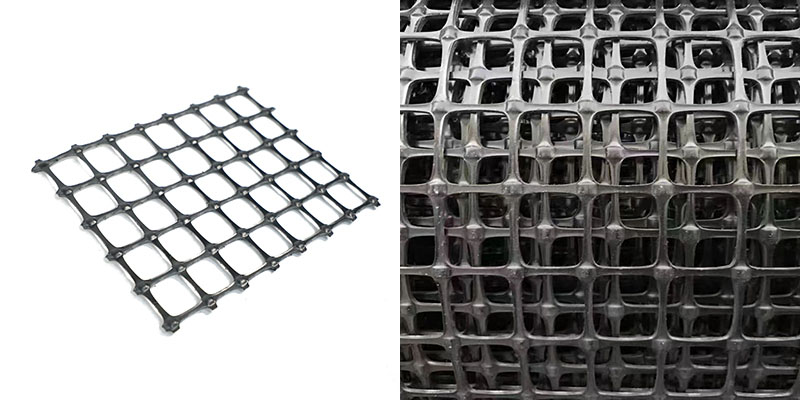A biaxial plastic geogrid is a type of geosynthetic material used in civil engineering and construction applications. It is designed to improve the mechanical properties of soils, providing reinforcement and stabilization. Here are the key features and uses of biaxial plastic geogrids:

1.Material:Biaxial plastic geogrids are typically made from high-density polyethylene (HDPE) or polypropylene (PP). These materials offer high tensile strength and excellent resistance to environmental factors such as chemicals and UV radiation.
2.Biaxial Reinforcement:The term “biaxial” refers to the fact that these geogrids have strength in both the machine direction (MD) and the cross-machine direction (CMD). This means they can withstand forces and stresses applied from multiple directions.
3.Applications:
- Soil Reinforcement: Biaxial plastic geogrids are used to reinforce soil structures such as retaining walls, embankments, and slopes. When placed within the soil, they distribute loads, prevent soil movement, and enhance the overall stability of the structure.
- Pavement Reinforcement: These geogrids are used in road construction to increase the load-bearing capacity of the pavement layers. They help distribute traffic loads and reduce the potential for cracking and rutting.
- Erosion Control: Biaxial plastic geogrids can be used in erosion control applications, such as stabilizing shorelines, riverbanks, and steep slopes.
- Mining and Landfills: They are also used in mining operations and landfill construction to improve the stability of waste containment structures.
4.Benefits:
- Increased Load-Bearing Capacity: Biaxial plastic geogrids enhance the bearing capacity of soils and materials, allowing them to withstand heavier loads.
- Prevention of Soil Erosion: They help prevent soil erosion by stabilizing slopes and embankments.
- Reduced Maintenance: When used in road construction, these geogrids can reduce the maintenance required by preventing the development of potholes and other pavement defects.
- Cost Savings: By improving the performance and lifespan of civil engineering structures, they can lead to cost savings over time.
5.Installation: Biaxial plastic geogrids are typically laid within or on top of the soil during construction. They are commonly sandwiched between layers of soil, aggregate, or asphalt in a layered system, depending on the application.
6.Design Considerations: When using biaxial plastic geogrids, engineers consider factors such as soil properties, load requirements, installation techniques, and long-term performance expectations to determine the appropriate type and quantity of geogrid to use.
Overall, biaxial plastic geogrids are versatile materials that have found wide application in civil engineering and construction projects, where soil stabilization, reinforcement, and erosion control are critical considerations.
